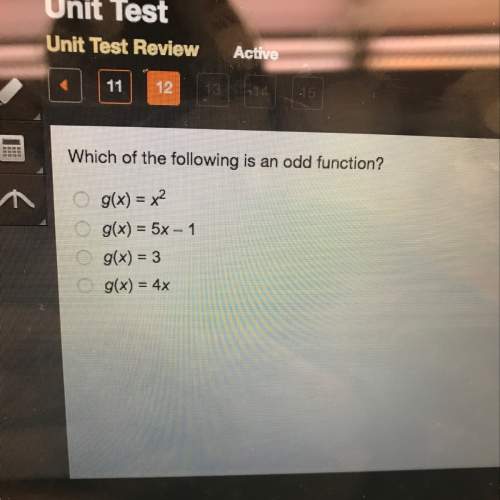Consider the first six terms of this sequence:
2, 5, 8, 11, 14, 17,
What would be the 35th te...

Mathematics, 29.10.2020 23:20 joecheeramkuzhi2338
Consider the first six terms of this sequence:
2, 5, 8, 11, 14, 17,
What would be the 35th term of this sequence?
Question 2 options:
A.35
B.104
C.107
D.3,335,436

Answers: 3


Other questions on the subject: Mathematics

Mathematics, 21.06.2019 20:00, amylumey2005
Wich statement could be used to explain why the function h(x)= x^3 has an inverse relation that is also a function
Answers: 3


Mathematics, 21.06.2019 22:00, blythephillips2734
Benjamin is making bow ties. how many 1/2yards lomg bow ties can he make if he has 18 feet of fabric?
Answers: 2

Mathematics, 21.06.2019 22:30, thelonewolf5020
Amachine that produces a special type of transistor (a component of computers) has a 2% defective rate. the production is considered a random process where each transistor is independent of the others. (a) what is the probability that the 10th transistor produced is the first with a defect? (b) what is the probability that the machine produces no defective transistors in a batch of 100? (c) on average, how many transistors would you expect to be produced before the first with a defect? what is the standard deviation? (d) another machine that also produces transistors has a 5% defective rate where each transistor is produced independent of the others. on average how many transistors would you expect to be produced with this machine before the first with a defect? what is the standard deviation? (e) based on your answers to parts (c) and (d), how does increasing the probability of an event a↵ect the mean and standard deviation of the wait time until success?
Answers: 3
You know the right answer?
Questions in other subjects:



History, 24.09.2019 12:00


Business, 24.09.2019 12:00









